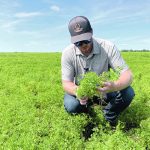Kirsten Ratzlaff of Corteva said the company’s new active ingredient, adavelt, is a florylpicoxamid/FRAC group 21 and the first broad-spectrum picolinamide fungicide for use against ascomycota pathogens.
Tag Archives Pulse Producer

Killing pea leaf weevils with ‘trap crops’
Meghan Vankosky, an Agriculture Canada entomologist, had an idea to attract adult weevils to a trap crop, then kill the pests with an insecticide or an insecticide alternative. That would reduce the number of pea leaf weevils that over-winter on the Prairies.

Tool developed to help build cold tolerant crops
Over the past 150 years, plant breeders have kept meticulous records of successes and failures. But with millions of data points over that length of time, it’s been a gargantuan task to optimize the information and increase the number of commercially viable fall-seeded crops.
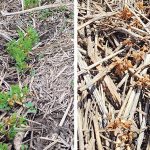
Winter lentil survival put to test
SuperCool winter lentils were put to the test this winter, with three of four sites recording total kill; especially disappointing because this was supposed to be a seed increase year. It is disappointing, but not surprising. The Winter Crop Survival Model predicted earlier that sites at Saskatoon, Riceton and Melita would not recover from the […] Read more
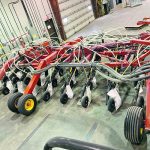
Pea shooters: do big drills damage seed?
Yellow pea prices hover around $14 per bushel at the elevator, so growers want to be confident their drill isn’t damaging valuable seeds. Charley Sprenger, an engineer at the Prairie Agricultural Machinery Institute, did a study to determine the level of seed damage caused by large air seeders. These require higher air velocity and volume […] Read more

See spores before they see you
Precise timing of fungicide applications can ensure you don’t spray too soon and waste product, or spray too late for the chemical to work. Predicting an outbreak would help. Fungicides work, but timing is crucial. Unfortunately, farmers have not had the tools to make accurate kill decisions. Instead, they rely on intuition and visual symptoms. […] Read more
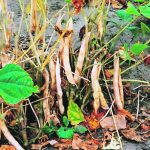
Do pinto and navy beans need nitrogen boost?
On average, navy and pinto beans produce less than 45 percent of their nitrogen needs through biological fixation with symbiotic rhizobia bacteria. There are few commercial inoculants available and they are not often applied, so farmers typically give their dry beans a springtime nitrogen fertilizer even though they are a legume crop. But beans do […] Read more
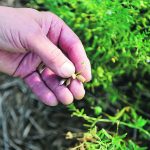
Keeping pulses in the rotation despite disease
Eric Schick’s first encounter with Aphanomyces root rot in lentils was in 2012, an unusual year for fields south of Moose Jaw. “2011 was really wet, followed by a lot of snow, then we came into a wet spring where it just didn’t stop raining,” he said. Soon, the lentil crop developed patches of yellowing, […] Read more
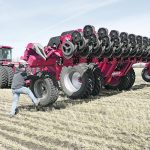
Poor maintenance defeats good tech
Running new fancy planters is fun. Working on dirty, used ones is less fun. But huge problems can be avoided if farmers take the time to make sure their equipment is set up the way it’s supposed to be. “If we don’t do good maintenance, it’s going to defeat that technology,” said Dustin Weinkauf of […] Read more

Pulse diseases continue their march across the Prairies
Resistant varieties are on the way, but it’s still going to be several years before they reach producers’ fields
The 2023 Pulse Variety Seminar was a new virtual webinar that replaces the Saskatchewan Pulse Growers annual Select Seed Grower meeting. The seminar was open to everyone, free of charge. The Jan. 17 webinar updated members on new varieties and initiatives in the pulse crop industry, including new information on root rot developments. Sabine Banniza, […] Read more
